About Mauser ... with love. On the road to perfection (part two)
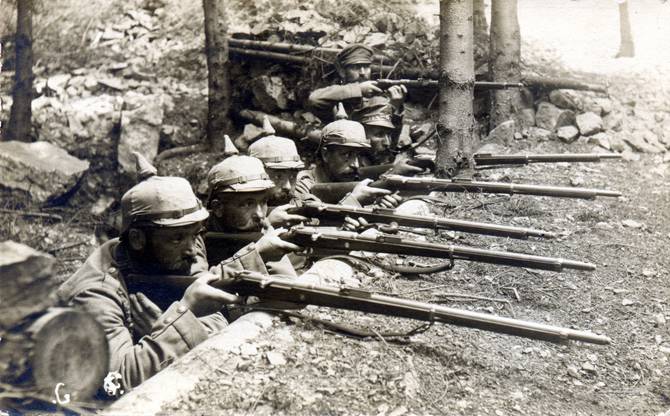
German soldiers with Gewehr 88 rifles during the First World War.
The German response to the French challenge was the creation of a special commission to test new rifles (GewehrPrufungsKomission), which in 1888 decided to replace the 1871 M model with the Gewehr 88 rifle. As a result, this rifle is known as the “Commission rifle” (“commission rifle”) and as the “Reichsgewehr” (“state rifle”), although it is also called the “Mauser”, and, by the way, there are certain reasons for this.
Gewehr 88 rifles and carbine (below). Top rifle - modification with burst loading. Medium - Gewehr 88 / 14 (sample 1914). Below - M1890 carbine.
First of all, a new Patrone 88 (Р-88) was developed for a new rifle, more sophisticated than the French. Perfection consisted in the presence of a flangeless bottle-shaped sleeve in which the charge was placed now of smokeless powder. Bullet - 7,92 - 8-mm blunt with a diameter of 8,08-mm of traditional design. That is, the "shirt", filled with lead. The bullet in the nickel silver shell weighed 14,62 g, the weight of the charge of smokeless powder - 2,5 g. The bullet had an initial speed of 635 m / s. The weight of the entire cartridge was 27,32. The cartridge was very well designed. The sleeve had a cap with a circular groove, the rim was missing. The small size of the cap less weakened the bottom of the sleeve. Due to the successful outer form, the new cartridges fit the cage well, took up little space in the store, delivered and easily delivered the bolt without delay, which made it possible to make the bolt of smaller diameter and facilitate the whole bolt and, accordingly, the receiver.
True, the depth of the rifle on the rifle itself soon had to be increased by 0,1 mm. No wonder it says that stingy and stupid always pay twice! The fact is that the Germans "one to one" copied the step and profile of the rifling in the barrel from the French, but did not think that the bullet of their rifle was different from the French one. The French was shell-free (that is, it was entirely made of copper, or a tombac without a lead core). Therefore, it was less prone to expansion when fired. And the Germans had a bullet shell, more go into the rifling. As a result, the movement of the bullet through the cuts, and the survivability of the cuts themselves have changed. I had to correct ...

Cartridge 7,92 × 57 P-88.
More advanced than the Austro-Hungarian, wafer-free German cartridge led to a more perfect form of the cartridge case. It became symmetrical on both sides and therefore could be entered into the store of any of them. In 1905, this cartridge was replaced with a new, even more advanced Mauser cartridge 7,92 × 57 mm, already with a pointed “S” bullet of a slightly larger diameter 8,20 mm and with a more powerful powder charge inside the sleeve. That is, the rifle got the Mauser cartridge, but it was not without reason that the cartridge is half a rifle! Although it is hardly worth it, therefore, to call this rifle "Mauser". After all, an important part of it - the longitudinally-sliding rotary bolt was developed not by Paul Mauser, but by Schlegelmilch - a gunsmith from the arsenal in Spandau. Although, of course, creating it, he looked at the Mauzer shutter. In addition, the rifle was equipped with a single-row store of the Manlicher pack system, which, by the way, didn’t like Paul very much.
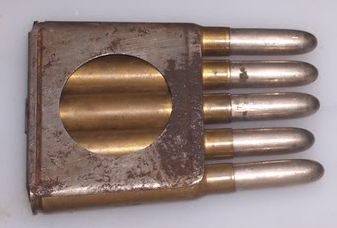
A pack to the rifle Gewehr 88.
It was this store that became the main feature of the new Gewehr 88 rifle. The peculiarity of this design is that the pack of cartridges remains in the store until the very last cartridge, and only then drops out of it through a special hole in the bottom of the store. Such a device speeds up the recharge process. weapons, but there is a possibility that dirt will get into the store through the lower opening, which can result in delays when shooting.
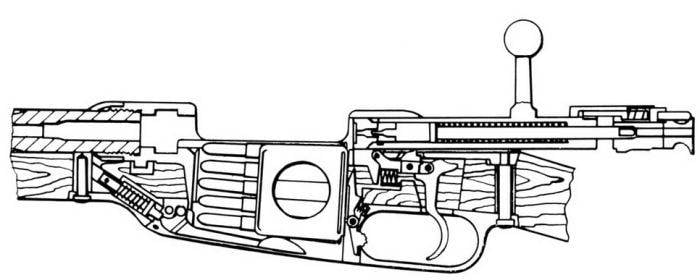
Diagram of the device shutter rifle Gewehr 88.
The use of Mannicher’s bundling system was a violation of copyright, which in turn resulted in litigation (as if this could not have been foreseen in advance ?!) and a lawsuit from Steyr about the violation of Mannicher’s patents by the German side. As a result, the Austrians were bought off by transferring the rights to ... the production of the Gewehr 88 rifle on orders that the Steyr company received both from Germany and from other states. In addition, the company was given the right to put the bolts of Schlegelmilch's design on their own rifles. Truly, “Solomon's solution”, isn't it ?!
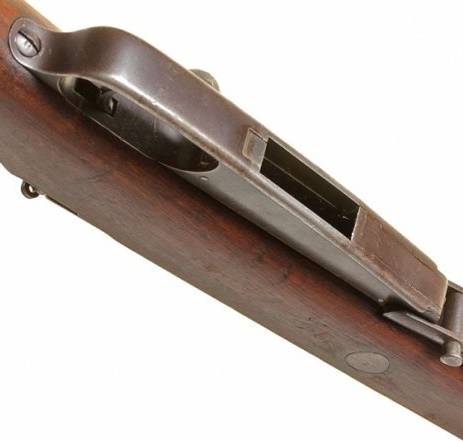
Hole in the store for dropping a tutu.
However, from a legal point of view, however, it turned out to be a technical rifle! The perfect design of the firing mechanism with a warning provided her with high accuracy of fire. But then it went further in what we today call the fashionable word "trend." The Gewehr 88 trend was that a relatively thin rifle barrel was placed in a metal casing of the Miega design, and there were no traditional wooden lining on it. This was done in order to eliminate the effect of the phenomenon of shrinkage of wooden parts of the box due to changes in temperature and humidity, which was reflected in the accuracy of fire. In addition, the "tube" protected the palm of the arrow from burns during intensive shooting. But as it often happens in life - “they wanted, as the best, but it turned out as always,” that is, not too well. It turned out that the presence of a casing increases the risk of corrosion, since water could get into the space between it and the barrel and it really got there, despite all the efforts of engineers and process engineers in production.
Gewehr 88 / 14 rifle with bayonet.
And this is how the slide box of a Gewehr 88 1891 model of the year, made in Dantzing by order of Turkey, looked like. In the 1914, all of these rifles were converted into a holder.
Following the rifle to equip the cavalry, the Karabiner 88 carabiner was put into service, already in 1890, and different from the rifle in a number of parts, that is, as usual - with a shorter barrel, no ramrod and mount for the bayonet, and, most importantly, a flat shutter handle, bent way down.
As you can see, the numbers on the sighting bar she "Arab".
The rifles of this series were further designated as Gewehr 88 / 05 (i.e., 1905 model) and Gewehr 88 / 14 (model 1914), which used new Mouser 7,92 × 57 mm cartridges with pointed bullets. These rifles, like the Kar.88 / 05 carbines, were reworked from early-release weapons by remarking the pillar, unfolding the barrel inlet in the barrel and marking the “S” stigma over the barrel chamber in the barrel. Both rifles were adapted for loading with clips. And the last of them on the left wall of the receiver received a notch for the fingers for greater convenience when loading from the clip and re-chopped the trunk with grooves, recessed 0,15 mm. A total of about 300000 copies of the Gewehr 88 / 05 rifle were produced. During the First World War, the Kaiser army used them along with the modern Gewehr 98. In addition, they were used by Austria-Hungary, the Ottoman Empire, China, and even ... the army of South Africa!
The barrel cover and the half-companion are clearly visible here. Each rifle had a “half-billow”, but in order to get a full length ramrod, it was necessary to screw together two half-billows. Saving metal and money!
Belt for belt and device for fixing false rings.
As a result, it turned out that the model 1888 model rifle of the year is faster than rifles such as the Lebel, Gra-Kropachek, the Japanese Murata rifle and in general all other systems with a barrel gantry. The Germanic rifle in the rate of fire was only slightly inferior to the Austrian Mannikher rifle, also the 1888 model of the year, but it had a lower weight, a more sophisticated cartridge, a more compact magazine, an improved two-sided burst, which can be inserted by any side, and finally a more perfect trigger. Among the shortcomings was a thin barrel with a clearly unnecessary "shirt" and a slightly slower opening of the bolt than that of the Manlicher rifle. In general, she was more perfect than her modern rifles of the same caliber created at that time in countries such as France, Japan, and Portugal!
But on this photo you can clearly see the added guides for the holder, the left notch under the finger for the convenience of equipment store from the holder, and a safety lock on the stem of the bolt in his back. On the M1888 / 05 modification, the guides for the cage were fastened with rivets, and on the M1888 / 14 they were attached with autogenous welding, a very technological and modern solution for those times.
During the First World War, when casualties in manpower and weapons in all countries were simply going off-scale, Germany developed a modernized version of the Gewehr 88 / 14 rifle, which, as noted above, besides being able to shoot 7,92 × 57 Mouser cartridges, Charged with plate clips, replacing the previous packs. Alteration was simple and was to install in the store guides for the cage and a special frame part, which played the role of the mine. In fact, it was the same bundle, and it was rather heavy, having a cut-off function at the same time, which did not allow double feeding or unloading of cartridges from the magazine under the action of a spring. Accordingly, the window for ejecting the packs in the bottom of the store was closed with a stamped steel plate. The rifles of this sample were produced around 700000. And the total production of rifles model "88", which produced both public and private companies amounted to about 2000000 copies. So the Germans fought then not only with new ones, but also with their old rifles!
Pay attention to the shape of the store and the lid, which covered the hole for the falling out of the pack, which was no longer needed.
Here is this cover shown in close-up.
Interestingly, in 1897, the G.88 / 88 rifle with a bolt based on Paul Mauser’s design of the 97 model of the year, but without a third additional battle larva, and with a box-based Mouser two-row magazine in the box was ordered to replace the “1898” in the army. But Gewehr 88 / 97 lost the competition to the 1898 Mauser of the year. But when the production of these rifles in Germany was discontinued, a part of the equipment and a license for its production were sold to China, where they began manufacturing it under the name of the “Hanyang rifle”, after the name of the city where the manufacturing plant was located.
The shutter is open. The old “pack” lever of the cartridge holder is clearly visible. It did not replace, because every little thing in the weapon costs money.
From the point of view of technology, the Gewehr 88 was a traditional for that time rifle with a longitudinally-sliding rotary bolt and with two radial combat stops located in the front part of the bolt. The ejector tooth and plunger reflector were located on the combat larva of the bolt. The main drawback of this design was ... the ability to assemble the bolt without this detail and even make a shot, only it led to the destruction of the rifle and, even worse, to the wounded shooter.
Fully open rifle. It is clearly seen where the guides were welded under the clip. Traces of welding are clearly visible.
Close-up shutter.
The rifle used packs with a capacity of five rounds, which were inserted into the magazine jutting out of the box and held in it with a latch. Naturally, the store had a rectangular opening for its removal, through which it fell out. In the back of the gate was a safety lock on three positions. The sight consisted of a front sight and a frame pillar, which was calibrated for firing at a distance of up to 2000 meters, and a carbine - up to 1200 meters. The length of the rifle barrel was 740 mm, total length - 1250 mm, weight - 3,8 kg. Accordingly, the carbine had a barrel length 445 mm, total length 950 mm and weight - 3,1 kg.
The impression of this sample on the Turkish order is about the same as that of the ... Mosin rifle. By the way, they even look alike. Despite the casing on the trunk, the tree of the box is “puffy”, which does not mean that high-quality wood was used for its manufacture. Heavy does not seem to be the rifle itself. She lies comfortably in her arms. Well, and located in the middle of the shutter handle shutter - a direct "relatives" of our "Mosinka" in all forms. At that time, its location was considered the norm. By the way, the shutter "knocks" in the same way. Because of the serving store in the middle you won’t take it. But this is the trouble of all rifles with the store of James Lee. That is, in principle, no special differences from our rifle ... no. Well, except that the casing on the barrel, and the “Arabic” marking of numbers on the sight scale, look strange to the eye. So the impression remains somewhat strange, as if holding something like a clone in his hands, that's just who whose clone is, is not very clear.
Продолжение следует ...
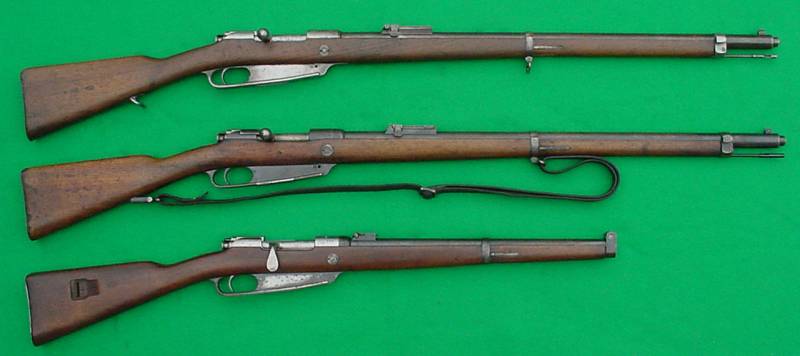

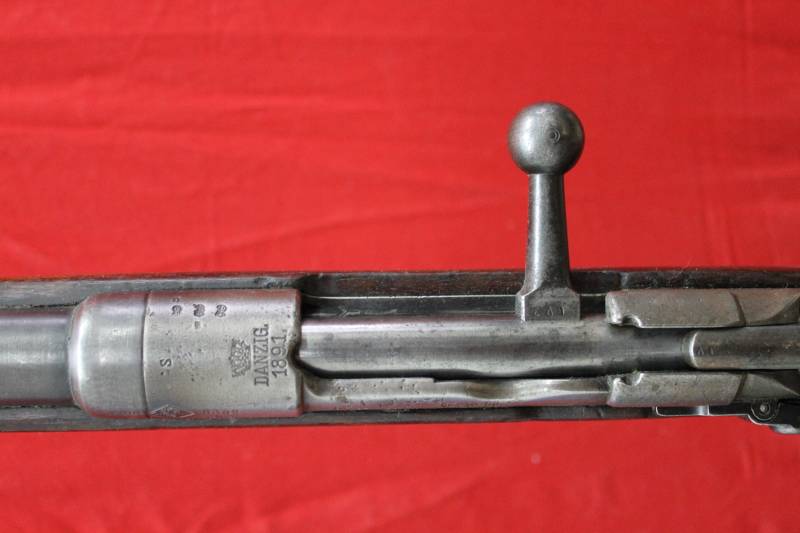
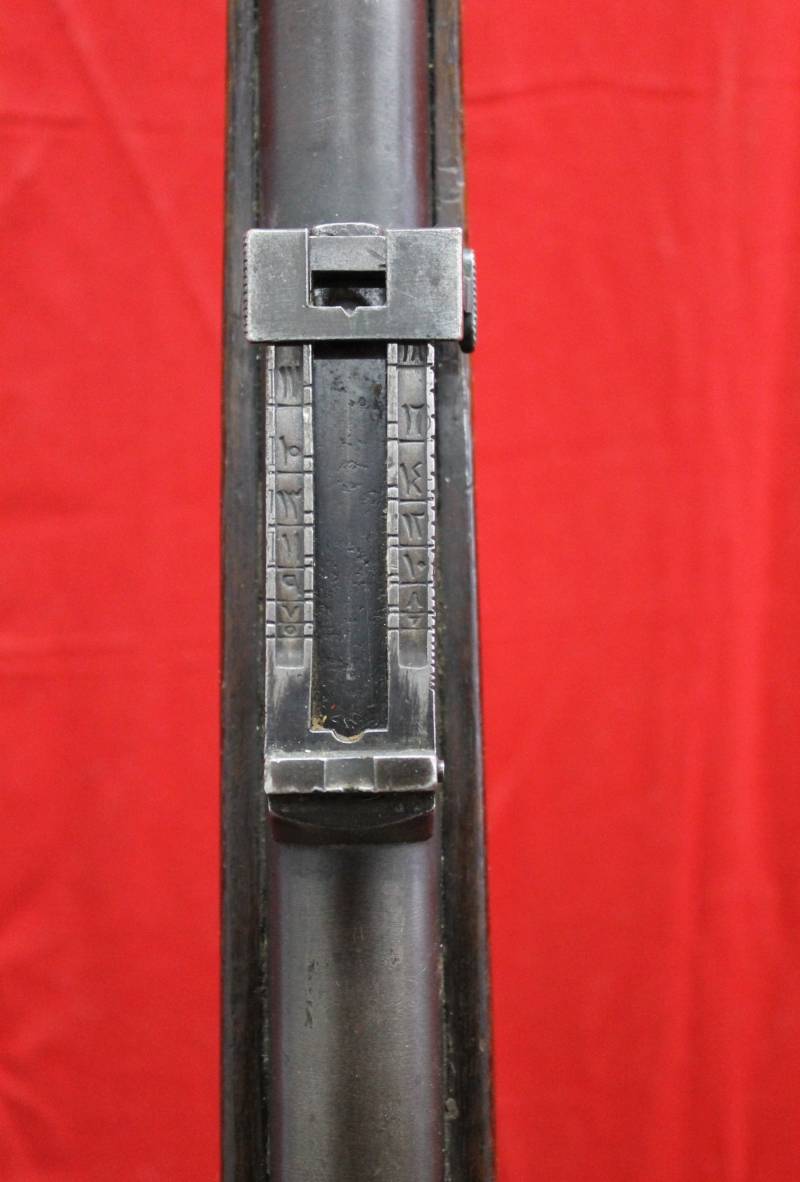
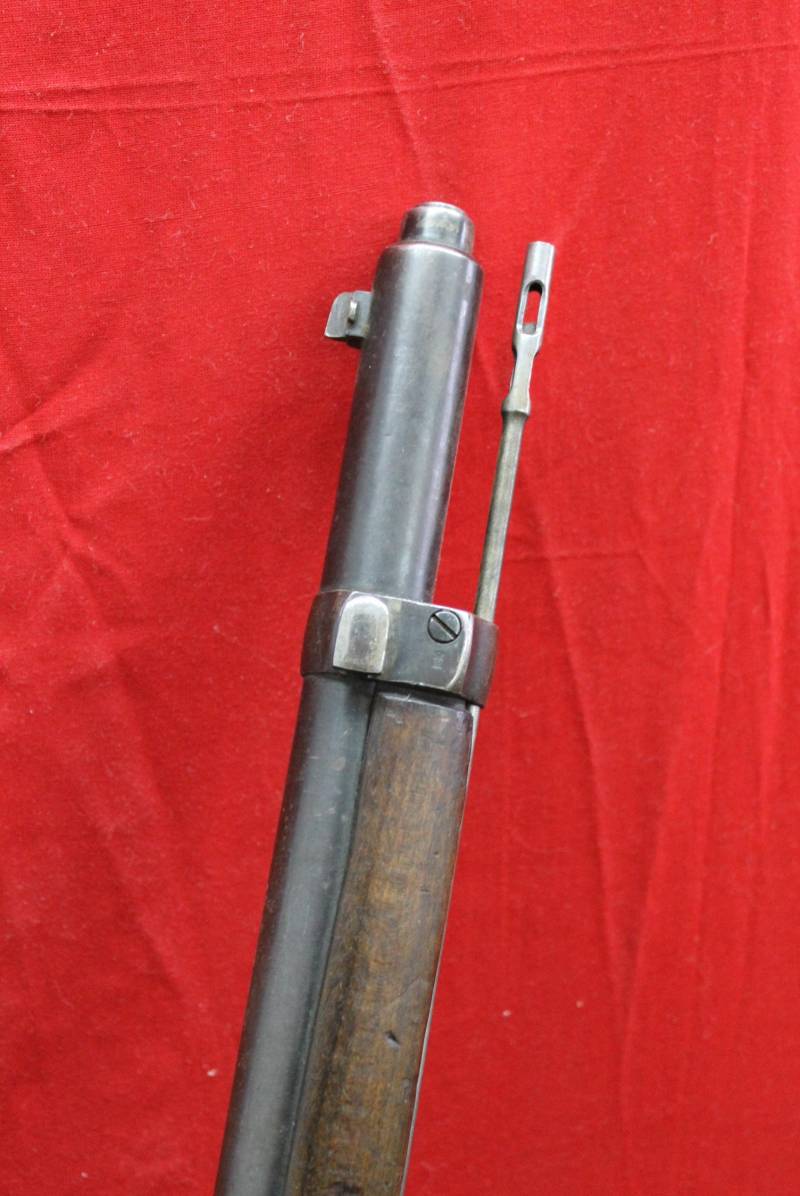
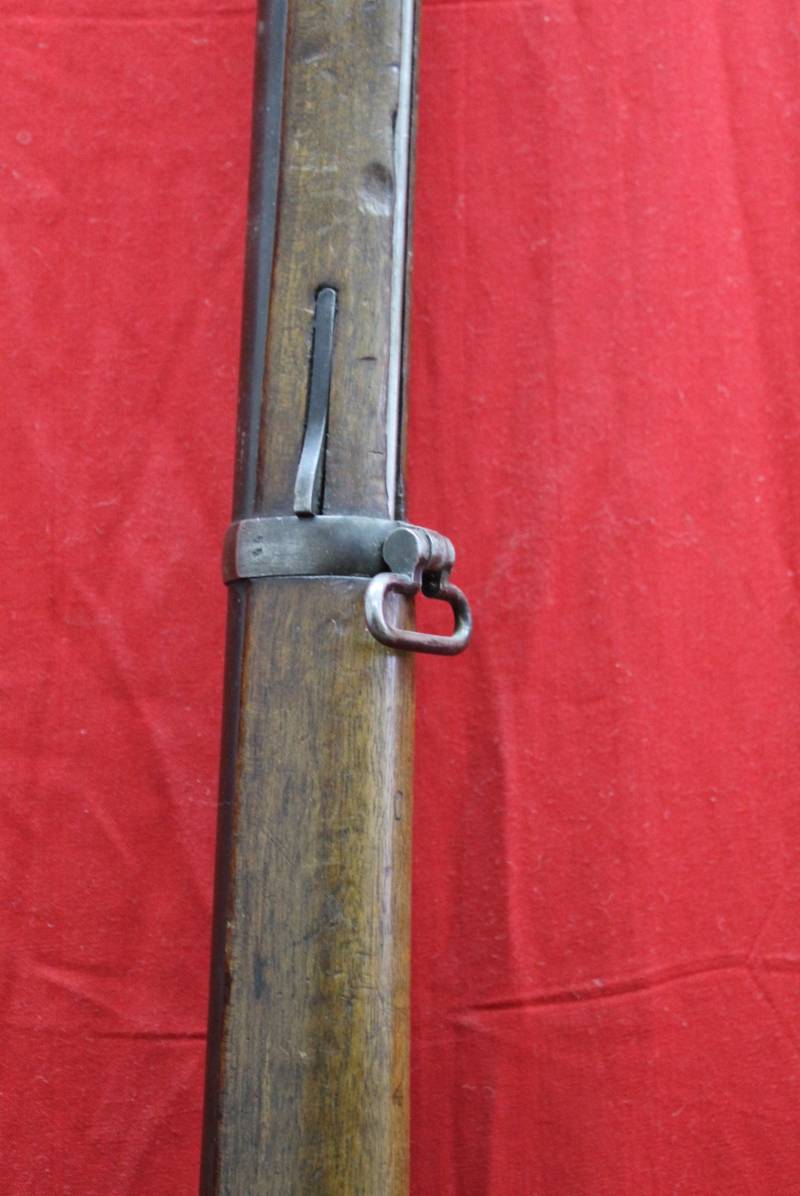

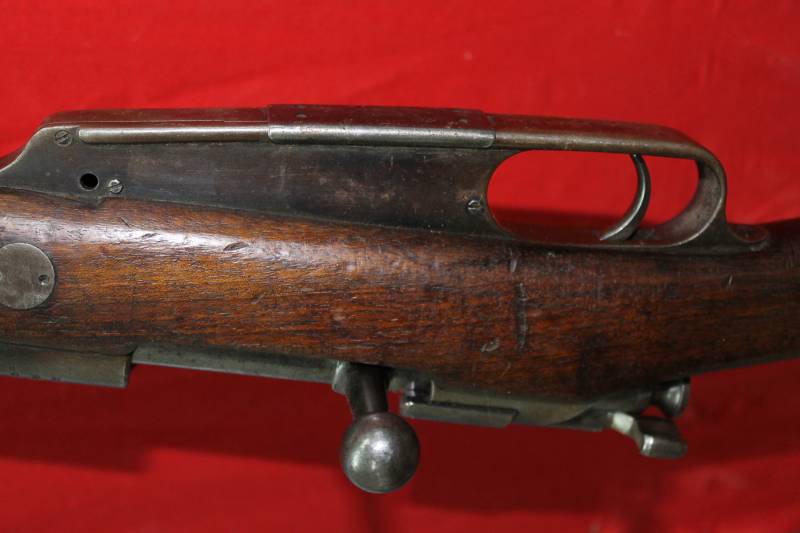
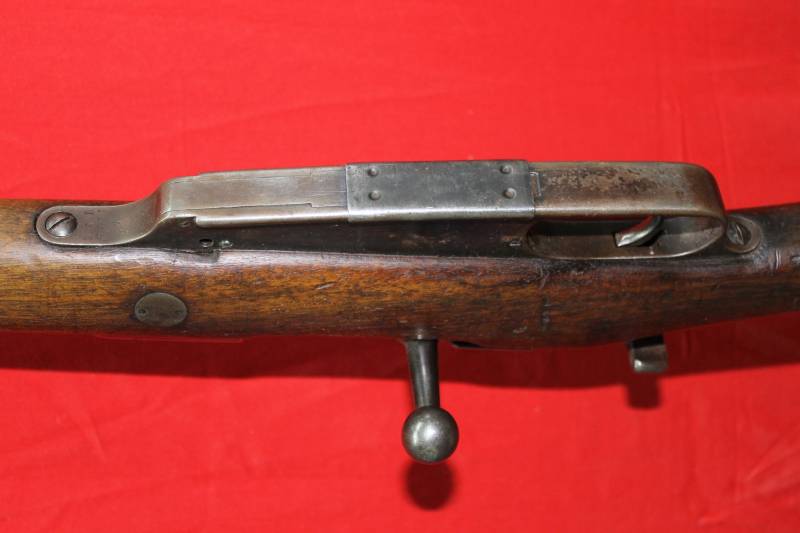
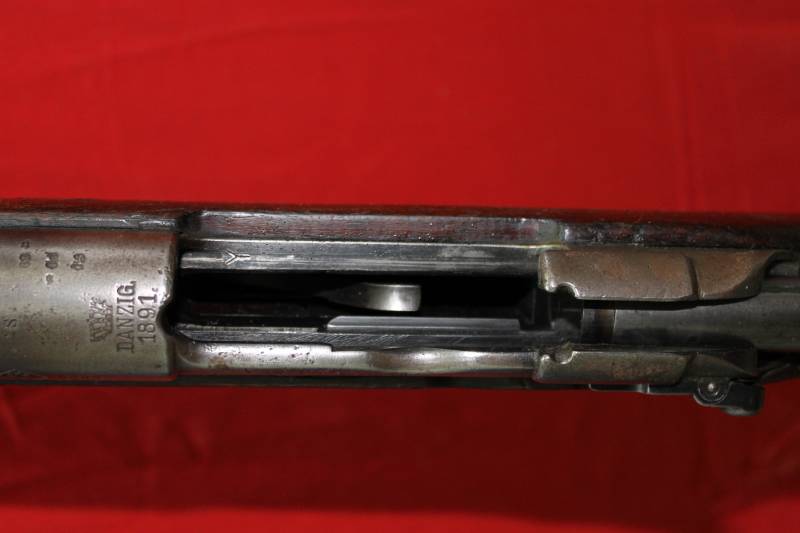
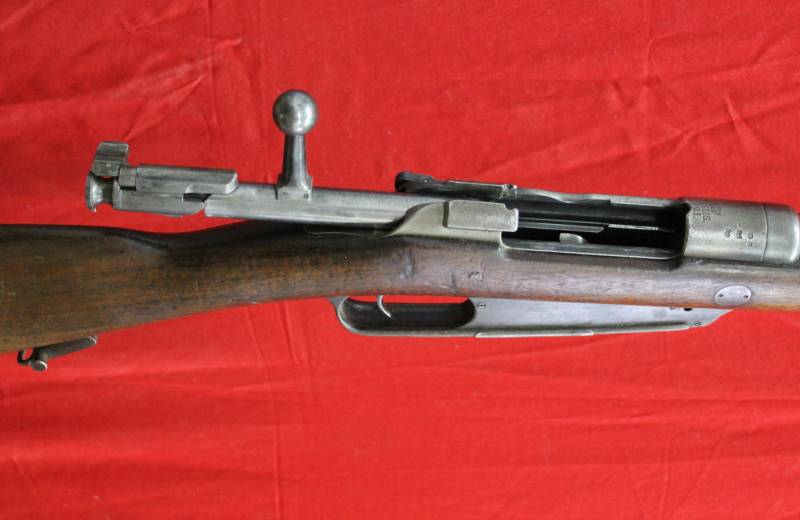
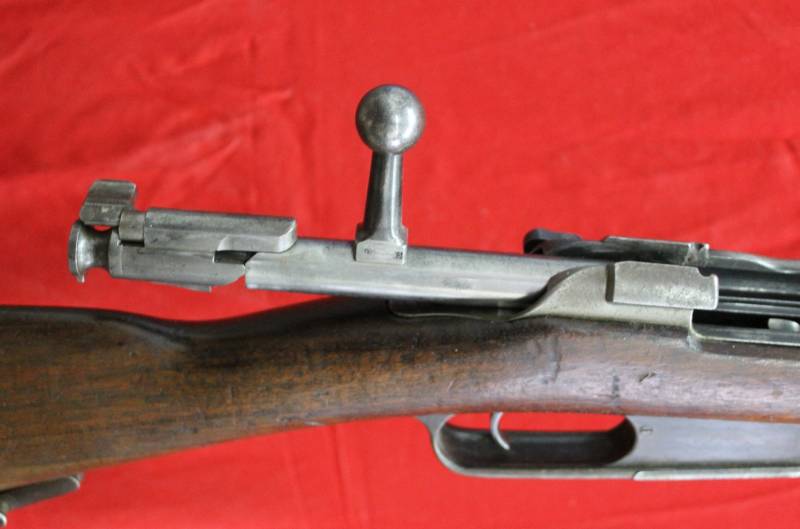
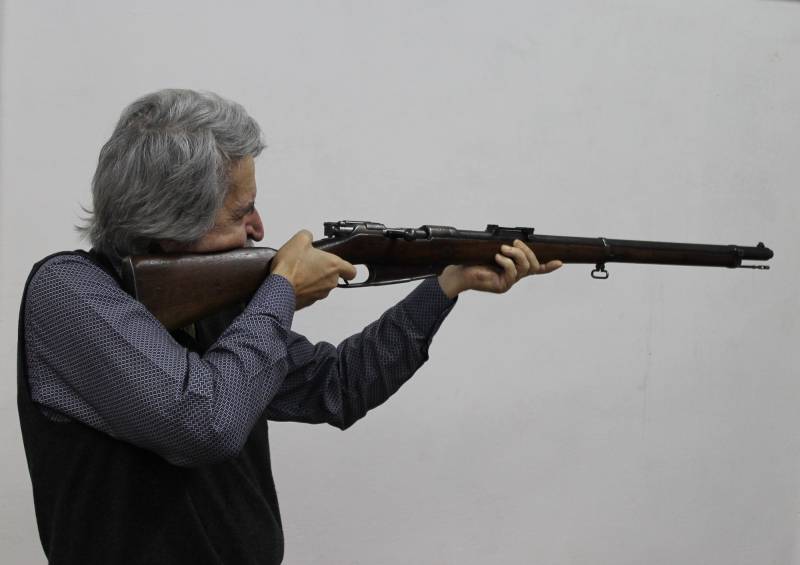
Information